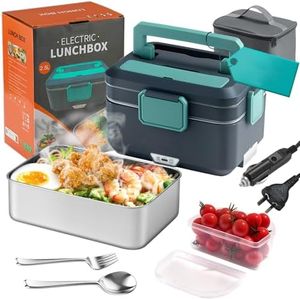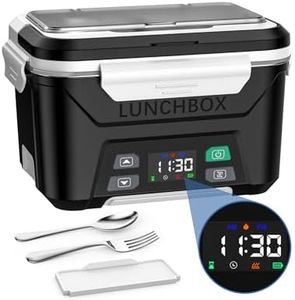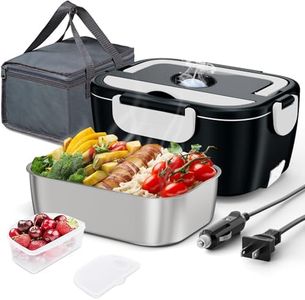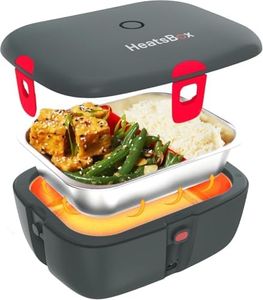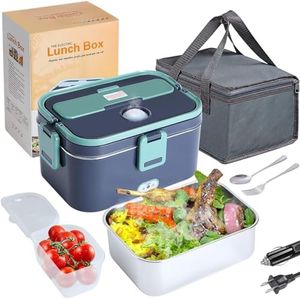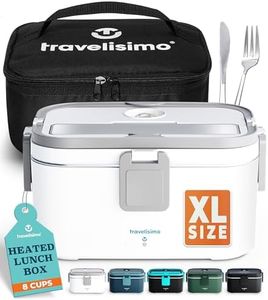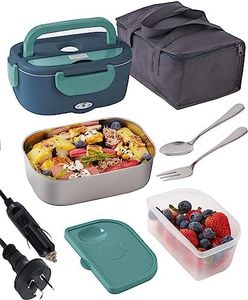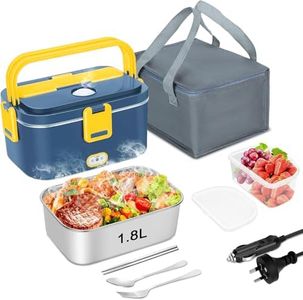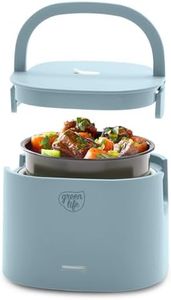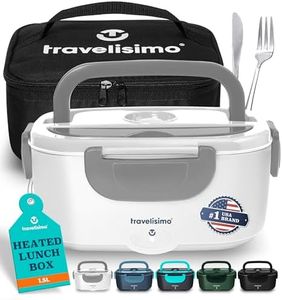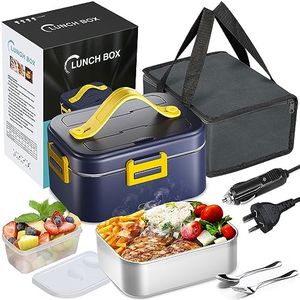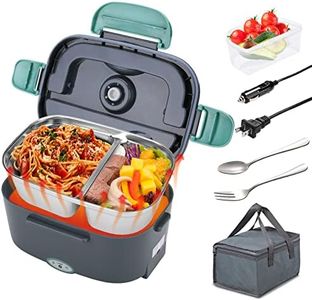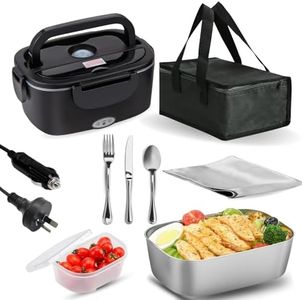We Use CookiesWe use cookies to enhance the security, performance,
functionality and for analytical and promotional activities. By continuing to browse this site you
are agreeing to our privacy policy
10 Best Electric Lunch Boxes
From leading brands and best sellers available on the web.Buying Guide for the Best Electric Lunch Boxes
Choosing the right electric lunch box can make your meal times more convenient and enjoyable, whether you're at the office, school, or on the go. The main goal is to find a lunch box that matches your eating habits, portion needs, and preferred ease of use. Consider how and where you'll use your lunch box most often, and what kind of food you typically bring. Understanding the basic features and specifications will help you make a choice that fits your everyday needs and helps your meals stay warm and tasty.Capacity (Volume)Capacity refers to how much food the electric lunch box can hold, usually measured in liters or milliliters. This specification is crucial because it determines whether the box can accommodate your typical meal size. Small capacities, below 1 liter, are suitable for light eaters or snacks. Medium capacity, between 1 and 1.5 liters, fits most standard lunches. Large capacities, 1.5 liters and above, are great for those who pack bigger meals or want to share. Choose the size that matches the amount of food you usually bring; there's no point picking one that's too big or too small for your appetite.
Heating Method and PowerElectric lunch boxes use different heating methods, such as steam-based heating or direct heating elements, and this affects how evenly and quickly your food is warmed up. The power is typically measured in watts. Lower wattage (below 40W) heats food slowly but is energy efficient; mid-range wattage (40-70W) strikes a good balance between heating speed and safety; higher wattage (above 70W) provides faster heating but can use more energy and may get hotter than desired. Think about how quickly you need your food warmed and whether you want gentle or fast reheating when evaluating this specification.
Power Source CompatibilityThe power source indicates whether the lunch box plugs into a wall socket, car adapter, or both. Some models are only for home or office use, while others can plug into a car's 12V outlet, making them great for drivers and travelers. If you'll eat at various locations, having both options offers maximum flexibility. Match your choice to where you'll most often need to eat warm food.
Material and Build QualityMaterials such as stainless steel, food-grade plastic, or a combination of both affect durability, safety, and how easy it is to clean the lunch box. Stainless steel interiors are robust, non-toxic, and retain heat well, while good plastics are lightweight and may have separate compartments. Assess your priorities: if you want sturdy and long-lasting, go for more steel; if you prefer lighter and sometimes transparent, consider high-quality plastics.
Compartment DesignSome lunch boxes come with one large compartment, while others have several separate containers for different dishes. Multiple compartments are great if you bring various types of food and want to keep flavors from mixing, but single compartments offer more space for larger portions or bigger items. Think about your usual meal format—if you like variety, pick a box with divided sections.
Ease of CleaningElectric lunch boxes are easier to use if they're also easy to clean. Look for descriptions like 'dishwasher-safe' or 'removable container.' Removable and non-stick containers make washing up faster and more thorough, which is especially useful if you use your box daily. If you want less hassle, opt for designs that come apart easily and have smooth surfaces.
Leakproof and Spill-ResistanceHow well the lunch box seals is important to prevent leaks and spills, especially if you carry soups or saucy dishes. Some electric lunch boxes have tight sealing lids and silicone gaskets, while others may be more basic. If you frequently bring liquids or want to carry your box in a bag, prioritize models that emphasize being leakproof.
